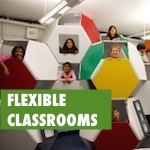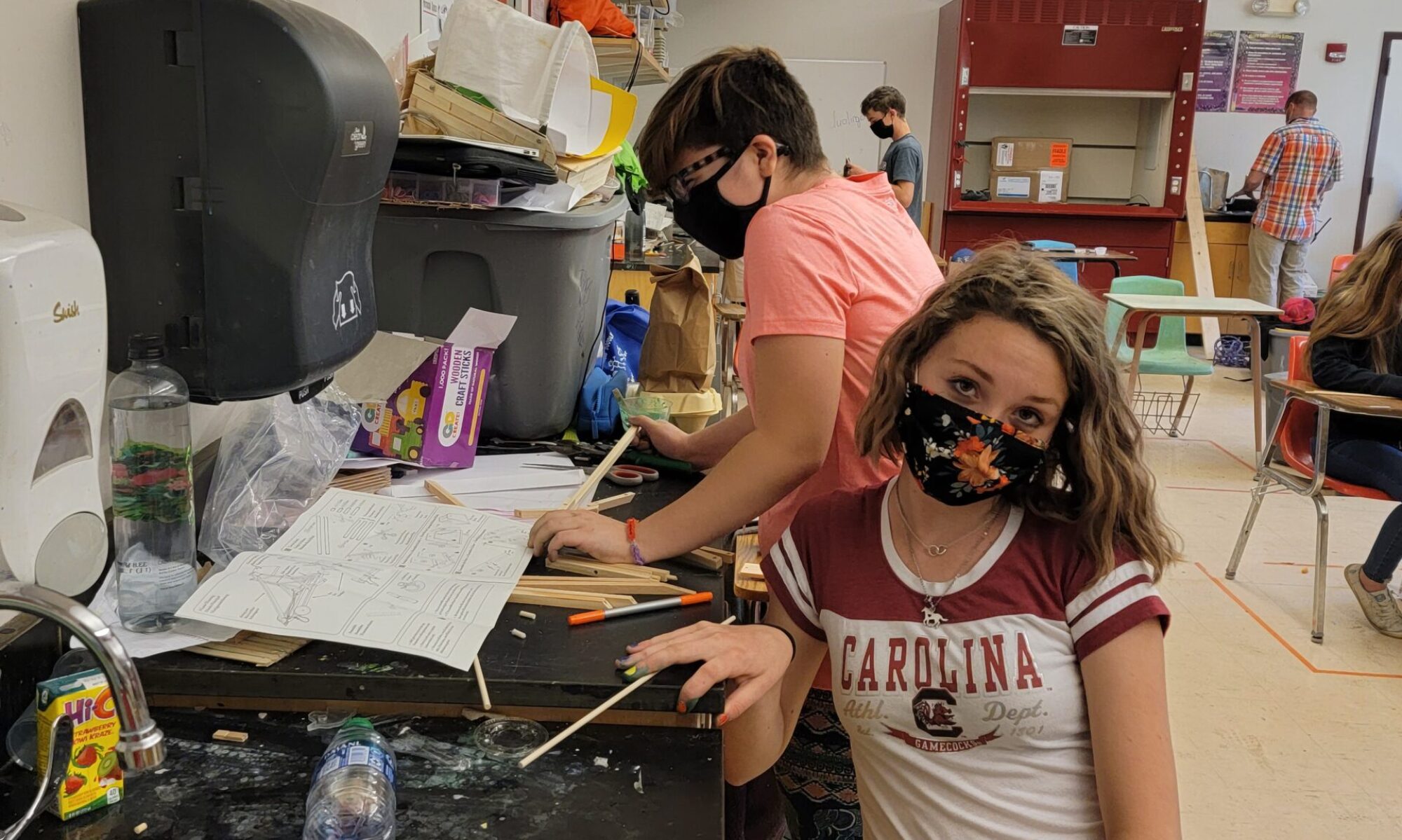Physical aspects of a student-centered classroom
 Sometimes what seems like a little change can make a big difference. That’s what two Proctor Elementary School teachers recently confirmed when they decided to incorporate flexible seating into their classrooms.
Sometimes what seems like a little change can make a big difference. That’s what two Proctor Elementary School teachers recently confirmed when they decided to incorporate flexible seating into their classrooms.
It’s been such a success that now every classroom in their school features some sort of flexible seating options for students.

Corey Smith and Courtney Elliott knew that these small shifts in the way the students occupied the classroom space would both require and reflect even bigger shifts in teaching practice. This year Corey teaches third grade, and Courtney is working with fourth graders. Recently, I caught up with them to learn more about what’s happening with their flexible seating.
Why did you make these changes?
What outcome were you hoping to achieve?
Courtney: We wanted to create more student-centered classrooms. Flexible seating is not just about where students are sitting. It’s also about how they’re learning and who they’re learning with.
Corey: This shift pushes us to create lessons that are more learner-centered and student-guided. There’s no more ‘sage on the stage’ — the room setup doesn’t work for that. Instead, it fosters a collaborative environment where kids are talking to each other about their work.
[huge_it_slider id=”19 “]
What are the behaviors that you’re noticing in response to changes in the layout?
- More self-control and responsibility;
- Work completed and submitted in a timely manner (by most students!);
- An increase in attention and engagement, including for guest teachers
- Increased problem-solving skills, such as conducting group conversations in the meeting area;
- Increased ability to solve their own problems with regard to seating;
- More kindness and generosity in their interactions with each other around work.
Courtney: “Miss Elliott, he took my spot!” was a common phrase to hear in my classroom last year as we made the transition to flexible seating. My response was always the same, “work it out or no one gets it.” I would be lying to say it didn’t drive me crazy.
Then Corey and I made the full jump into flexible seating.
The idea that flexible seating isn’t just about the seats really shaped how I explicitly taught my students how to use them this year. In an article Corey and I had read by education blogger Mary, of Teaching With A Mountain View, she says that the room itself needs to be flexible and with this philosophy of flexibility I was able to have those conversations with my class about what seating works best for them and how to deal with it if someone gets a choice you wanted, or if you feel someone is “hogging” the seat. Recently we just got a brand new quarter round bench seat. I didn’t even think to have them take turns with it like we had to explicitly do back in October when we got the bungee chair. Then one day I heard it: “You can have the quarter round for writing. It’s my home base, so it’s only fair you get a turn with it, too.”I still sometimes have to say ‘work it out or no one gets it,’ but that comment showed me we were on the right track!
Have these seating changes affected any other part of the day?
Courtney: Each lesson has time in the meeting area for learning, sharing, and reflection as a whole group. Then, students choose a space to pursue their learning. Students are able to change their seating during certain times of the day to create cooperative learning environments. Often they move through multiple locations throughout the day, depending on what we’re doing.
Corey: Really, the whole day has shifted from what we’re teaching to be more focused on what the students are doing. That’s what the space has prompted.
What are the biggest challenges and successes about changing the classroom layout?
-
Challenges:
- Choosing seats. Some students still spend significant time choosing a seat, or needing to be moved, and some seats are more popular than others which can lead to conflict.
- Inappropriate use of furniture. Some items we purchased aren’t ideal for kids of this age group, for example, students bounced excessively on the stability balls distracting everyone!
- Durability of items. Kids are tough on furniture and some items are not holding up well.
-
Successes:
- Higher engagement and self-direction. For example, in ELA, students are more engaged when they have work to complete, and they are able to flexibly move their seating to change activities, like from independent reading to small group student-led book clubs.
- Community. Students have pride in their classroom and enjoy choosing home bases (their go-to spot for the day). They are also able to evaluate and decide how to arrange classroom furniture based on the task.
How did you make it happen?
Corey: Last year we found that we were moving our furniture old setups around quite a bit, which prompted conversations about how things could be improved. Our students were very involved in the design process. They helped decide on furniture and classroom layout, and even surveyed other students for input.
Courtney: We also worked together to think about our goals for the space and what types of activities students would be doing — would they be using their Chromebooks a lot, writing by hand, talking or working together as a group? Once we finalized our plan, we were able to apply for grants so that we could purchase the furniture. Donations are another way to go, and thrift stores often have finds that can be repurposed.
(Editor’s note: Imagine the WOW factor of involving students in the grant-writing process!)
What advice would you give to folks considering this?
Corey: Flexible learning environments are not a quick fix; they are a long-term shift in the way learning happens in the classroom. You have to scaffold and add options a little at a time. Introduce a few new seating options at a time in the beginning, and spend time clearly modeling expectations on how to use the seating.
Courtney: It’s also helpful to have students create a contract with you, addressing things such as how to decide who sits where, when, and for how long: essentially together as a learning community you want to outline how you’ll use the space and manage conflicts. And you need to return to this conversation regularly and reflect on how things are going, multiple times a day at first, and then at regular intervals or whenever an issue arises. Don’t give up if a problem like talking off-topic arises. Instead reflect with the students to come up with solutions.
And a teacher-directed temporary loss of the privilege can keep work moving forward if negotiations get stuck.
Both: You should totally do it!

Courtney: Flexible seating allows students to learn comfortably while thinking about where and how they learn best. These skills then transfer into their academic learning and form a foundation for making other choices.
Corey: Flexible seating also fosters more classroom discussion and problem-solving. Finally, flexible seating completely changes the culture of your classroom! The classroom is no longer “my classroom” but rather it is ours. It fosters more student ownership of learning and allows the teacher to place more responsibility on students. Ultimately, we have seen our students come out of this as independent learners and leaders in their learning!


